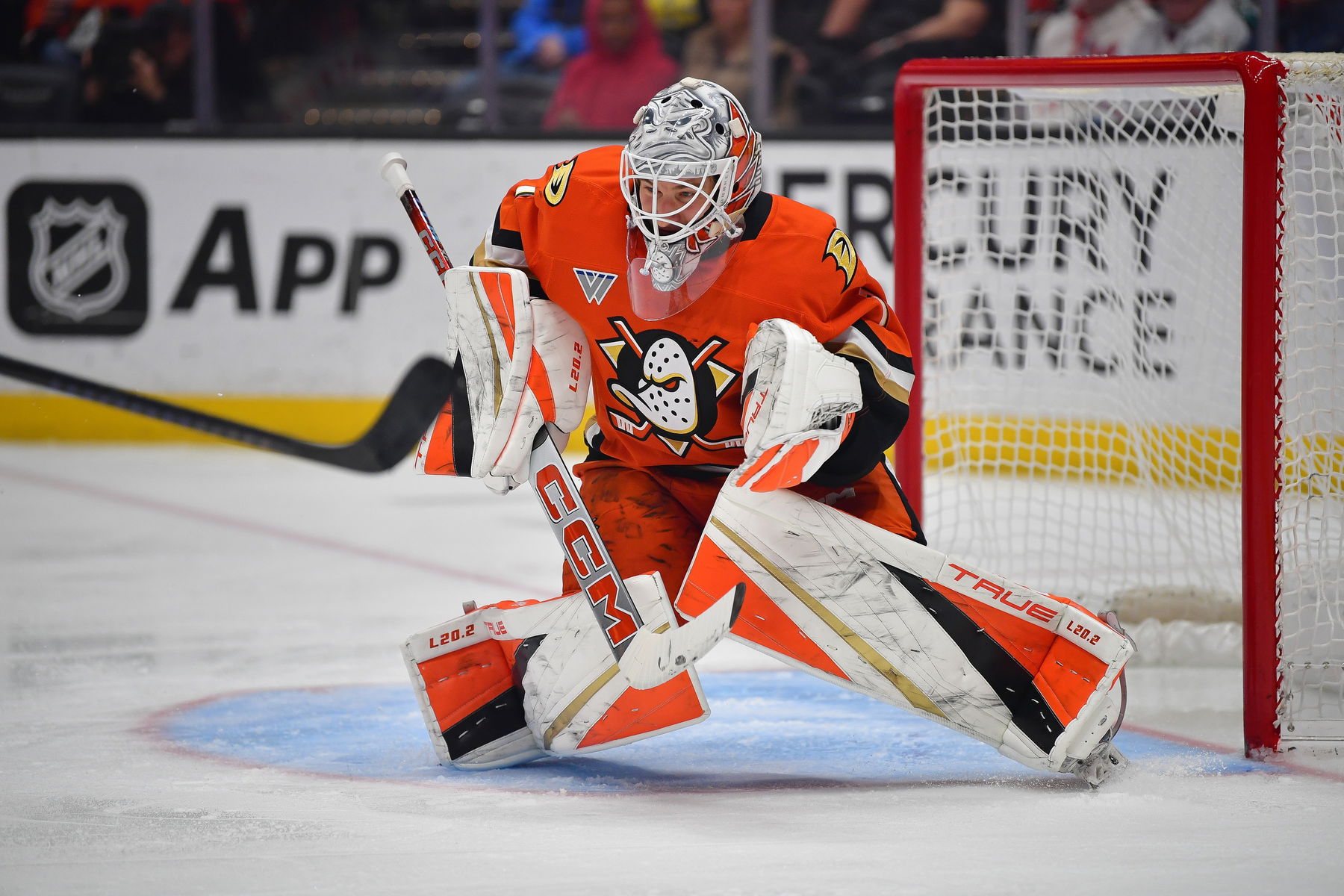
The Anaheim Ducks returned to Honda Center on Sunday to start a five-game home stand after a three-game road trip that saw them earn a 1-1-1 record. They entered play one win under the .500 mark on the season, with a 30-31-8 record and sitting in sixth place in the Pacific Division standings.

Their opponent was the Carolina Hurricanes, who lost their prior game on Saturday against the Los Angeles Kings but won their previous eight beforehand. They came into this game firmly in second place in the Metropolitan Division.
Nikita Nesterenko missed the Ducks’ last game, a 4-1 win over the Nashville Predators on Thursday, and returned to this game in his familiar spot on the wing of Mason McTavish and opposite Trevor Zegras.
In this game, Lukas Dostal got the start in the Ducks’ crease and stopped 32 of the 36 shots he faced.
Former Duck Frederik Andersen got the nod for Carolina and was sensational, stopping 34 of 36 shots.
Here are my notes from this game:
Rush Defense-Ducks backcheckers did well to hustle back into the defensive zone to negate odd-numbered chances for the Canes, but once there, it seemed there was a lack of communication between them and the defensemen. Oftentimes, trailers were left uncovered and allowed to get dangerous shots off from the high slot.
Penalty Kill-Leo Carlsson was featured on the Ducks’ second PK unit in this game, something suggested to Ducks head coach Greg Cronin by general manager Pat Verbeek at the end of the 2023-24 season but had since been abandoned until now. Carlsson is one of the better players on the Ducks' roster at diagnosing opposing attacks and disrupting with his stick. More time to blossom on the PK could unlock him as a potent penalty killer.
Lukas Dostal-Despite the low save percentage in this game (.889), Dostal managed to still save 1.06 goals above expected. The Hurricanes are a volume shooting team, reliant on shots from every angle and winning ensuing battles in the corners and in front of the net to generate their dangerous looks and maintain possession.
Dostal managed the game well for the skaters in front of him and regularly fought through layers of traffic to swallow perimeter shots. He kept the Ducks within striking distance for the majority of this game.
Power Play-The Ducks’ power play continues to experiment with different personnel and/or structures. Zegras, Terry, Carlsson, and McTavish regularly interchange throughout the offensive zone when set up and in this game, Zegras was more prominent below the goal line and in front of the net.
Carolina pressured heavily in their defensive zone, rendering crisp and flat passes hard to come by. The aforementioned unit, along with Jackson LaCombe, created the most dangerous looks, cleverly sending out misinformation. Still, Carolina’s penalty killers along with Andersen’s form in net, kept them off the scoresheet.
The Ducks will next host the Boston Bruins on Wednesday evening at Honda Center.
